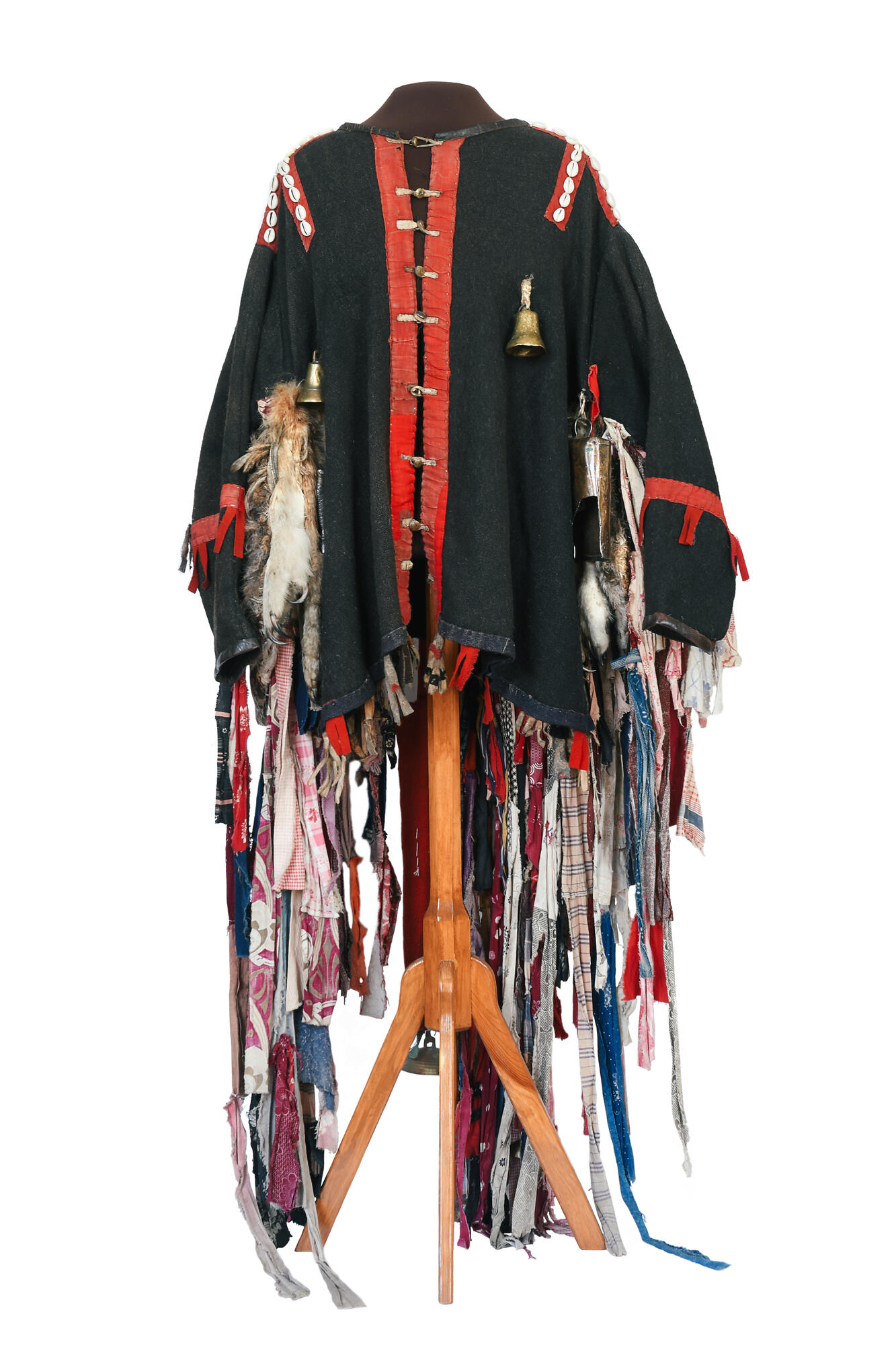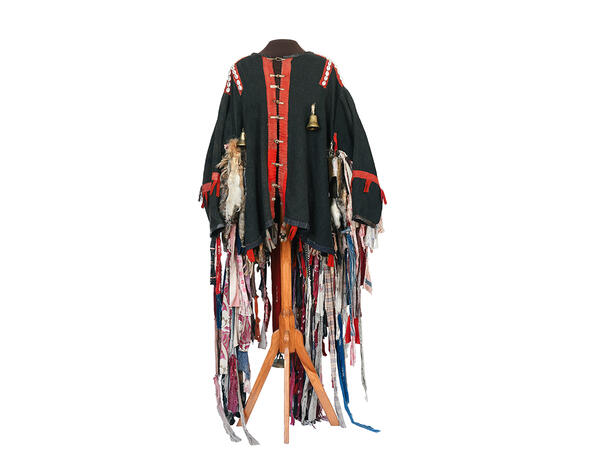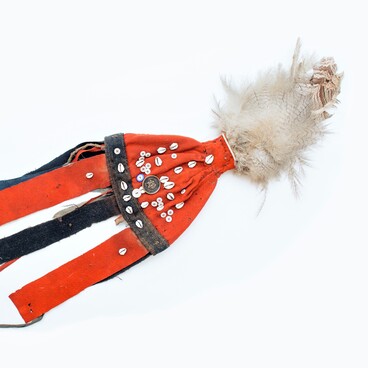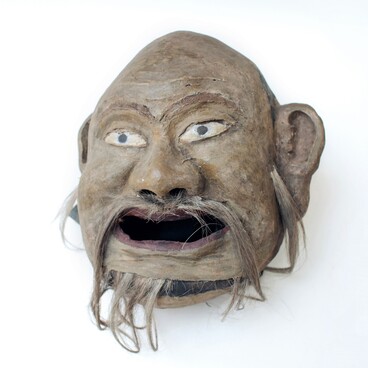The collection of the Minusinsk Museum contains more than 250 items related to the religious beliefs of several indigenous peoples: Khakas, Tuvans, Ostyaks (Khanty), Tungus, and Altaians.
Shamanism was widespread among the Khakasses until the middle of the 19th century. Each shaman (kam) had his own mountain, which, according to beliefs, was inhabited by guarding spirits, tyoses. Strong shamans were believed to receive spirits from stars, fire, and lightning.
Shaman’s tyoses were divided into ‘clean’ and ‘unclean’, they were distinguished by sex and age, as well as by their purpose. Tyoses were depicted in the form of various animals and birds, snakes, and whirlwinds.
Khakass shamans wore special ritual costumes: jackets, hats, and boots during shamanistic rituals. All items of costume were sewn for them by relatives.
The Khakasses believed that the shaman’s jacket protected the master like armor or chainmail. Ribbons of cloth were sewn to the jacket — each signifying the spirits that surrounded the shaman during a shamanistic ritual. Small beads, which were also used to decorate clothing, were believed to be the eyes of the tyoses. There could be 50 or more of them.
A leather band with sharkun bells was fastened to the back of the jacket to ward off evil forces and protect the kam from the evil intentions of other shamans.
Large bells hung on the kam’s chest — botala. During the trance, the shaman imagined himself riding a horse and imitating the stomp of a running herd by ringing bells.
A pair of wings of a raven or a kite was also sewn to the shaman’s jacket. And the whole costume symbolized the bird that the shaman turns into when he visits other worlds — an eagle, a golden eagle, or an owl.
Ordinary mortals were not allowed to touch, put on or even look at the shaman’s costume. Therefore, it was stored in a special case away from prying eyes. Every three to six years the shamanic garments had to be renewed. When the costume was completely worn out, they hung it on a tree in the forest so that the spirits living in it could leave it and attach themselves to the new outfit of another shaman. When a kam died, on the fortieth day his ritual clothes were also ‘buried’ by hanging in a tree.
Khakass shamanism echoes the ancient religious teachings of Iran and Central Asia. The struggle of two gods — good and evil, the special importance of the cult of fire, the complex concept of the soul, the similar names of gods — all these point to the cultural connection of the peoples of Siberia with the peoples of Iran, Tibet, and even India.
Shamanism was widespread among the Khakasses until the middle of the 19th century. Each shaman (kam) had his own mountain, which, according to beliefs, was inhabited by guarding spirits, tyoses. Strong shamans were believed to receive spirits from stars, fire, and lightning.
Shaman’s tyoses were divided into ‘clean’ and ‘unclean’, they were distinguished by sex and age, as well as by their purpose. Tyoses were depicted in the form of various animals and birds, snakes, and whirlwinds.
Khakass shamans wore special ritual costumes: jackets, hats, and boots during shamanistic rituals. All items of costume were sewn for them by relatives.
The Khakasses believed that the shaman’s jacket protected the master like armor or chainmail. Ribbons of cloth were sewn to the jacket — each signifying the spirits that surrounded the shaman during a shamanistic ritual. Small beads, which were also used to decorate clothing, were believed to be the eyes of the tyoses. There could be 50 or more of them.
A leather band with sharkun bells was fastened to the back of the jacket to ward off evil forces and protect the kam from the evil intentions of other shamans.
Large bells hung on the kam’s chest — botala. During the trance, the shaman imagined himself riding a horse and imitating the stomp of a running herd by ringing bells.
A pair of wings of a raven or a kite was also sewn to the shaman’s jacket. And the whole costume symbolized the bird that the shaman turns into when he visits other worlds — an eagle, a golden eagle, or an owl.
Ordinary mortals were not allowed to touch, put on or even look at the shaman’s costume. Therefore, it was stored in a special case away from prying eyes. Every three to six years the shamanic garments had to be renewed. When the costume was completely worn out, they hung it on a tree in the forest so that the spirits living in it could leave it and attach themselves to the new outfit of another shaman. When a kam died, on the fortieth day his ritual clothes were also ‘buried’ by hanging in a tree.
Khakass shamanism echoes the ancient religious teachings of Iran and Central Asia. The struggle of two gods — good and evil, the special importance of the cult of fire, the complex concept of the soul, the similar names of gods — all these point to the cultural connection of the peoples of Siberia with the peoples of Iran, Tibet, and even India.



